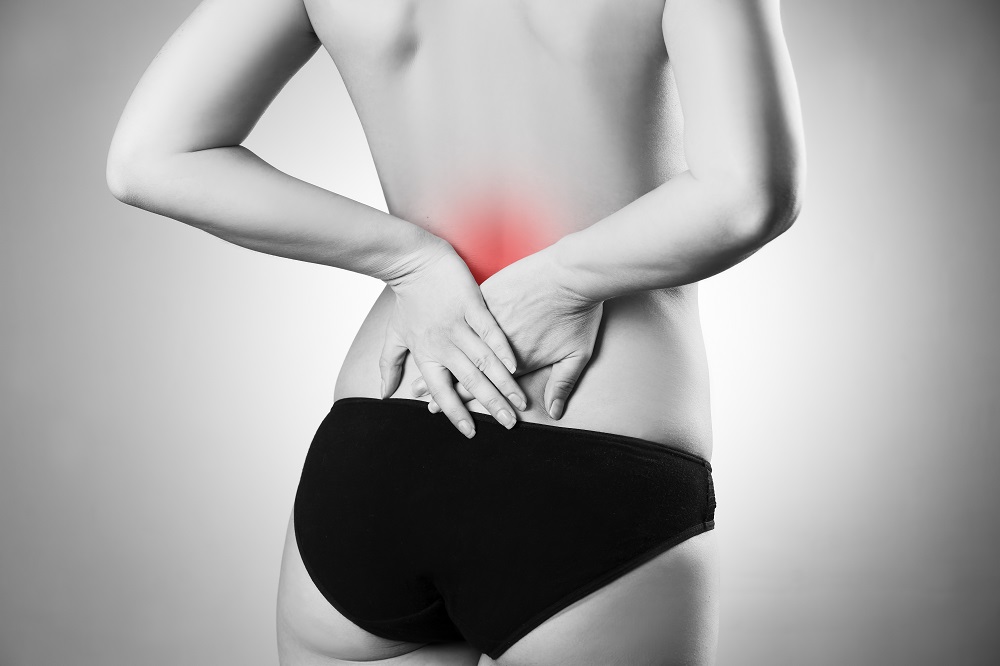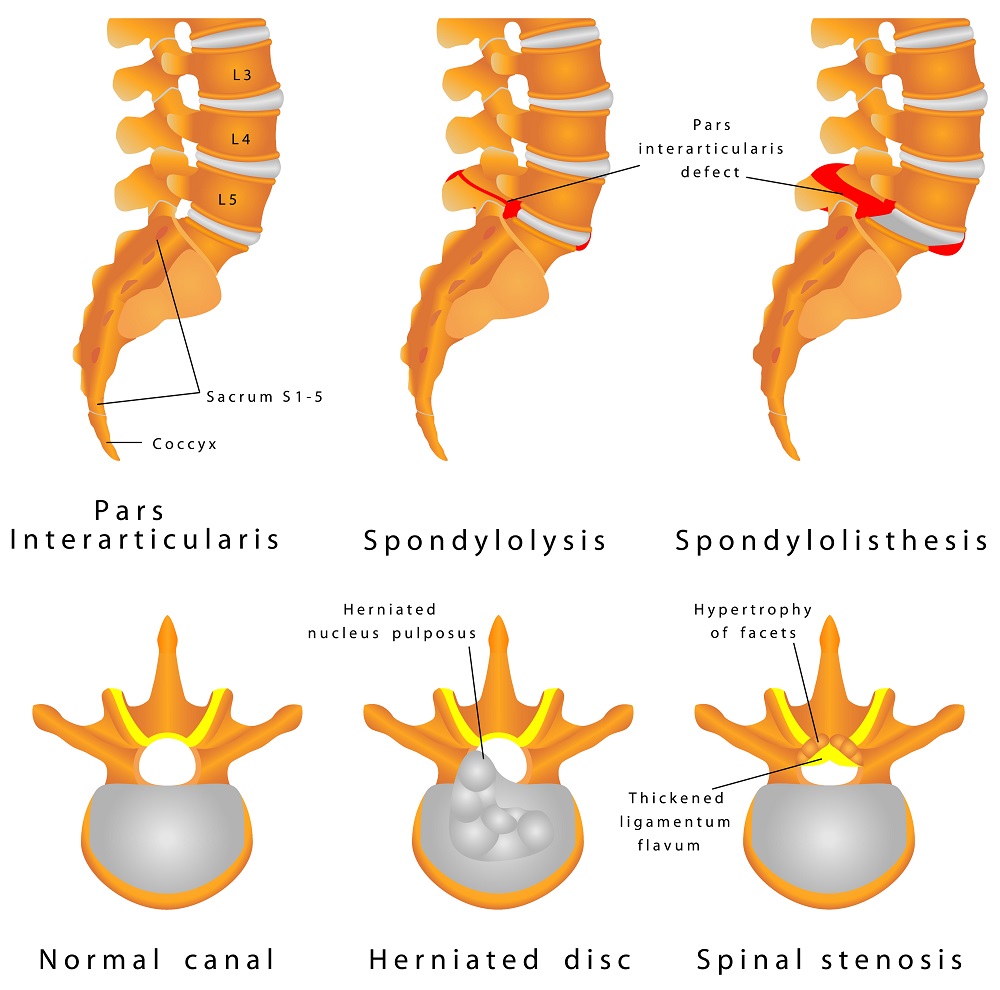Many affected people don’t feel any discomfort, and a few might only suffer from uncharacteristic pain of the lower back. Once the slip process starts, movements become more painful in the respective area.
Symptoms of spondylolisthesis might be:
- Back pain
- Buttock pain
- Pain that runs from the lower back down one or both legs
- Weak or numb leg / legs
- Walking difficulties
- Leg, back, or buttock pain that gets worse by bending over or twisting
- Seldom: Loss of bowl or bladder control
The disease might be caused by a defective joint that the patient has had since birth, a joint damaged in an accident, by arthritis or an infection, or a vertebra with a stress fracture as a result from overuse of the joint (e.g. in competitive sports).
Children and teenagers doing sports such as weight lifting, soccer or gymnastics are at risk of getting spondylolisthesis: They often overuse back bones to the point of causing stress fractures in vertebrae, which can cause the disease. Older adults may develop spondylolisthesis, because wear and tear on the back results in stress fractures. O they might get it when the disc and joints are worn down and slip out of place.
Spondylolisthesis might lead to losing control over the bladder or bowels. But this is very uncommon.
An x-ray shows if a vertebra in the back has slipped out of place. A CT scan or an MRI also helps pinpoint the damage. Treatment starts with stopping any physical activity that may have led to spondylolisthesis. To help relieve pain, the physician probably prescribes nonsteroidal anti-inflammatory drugs, such as ibuprofen or naproxen. Physical therapy is supposed to build up back and stomach muscles (called core strengthening); weight loss might help overweight people.
The doctor may suggest surgery to patients that suffer from:
- Extreme pain
- Continuous bone movement
- Damage of nerve root
- Damage of spinal cord damage
…related to the spondylolisthesis
During surgery, bone or other tissue might be removed to take pressure off the spinal cord or nerves (decompression). Or operation has the target to fuse the bones in position. Both decompression and fusion might be done during the same surgery. After any of these surgical interventions, the patient probably has to wear a cast or back brace for a shorter period of time. Later, rehabilitation therapy will help strengthen muscles and facilitate movements.
Preventive measures
The disease cannot be completely prevented. Certain sports, e.g. gymnastics, weight-lifting, and soccer may increase the stress on the vertebrae and increase the risk of getting spondylolisthesis.
But it is not always necessary to quit the favorite sport in order to prevent the condition. Sometimes safeguards or stretching and strengthening programs already help a lot. Some older adults who already suffer from wear and tear of the spine may consider switching to another type of sport.
In general, regular exercises, strengthened and trained core musculature as well as movements and exercises that are beneficial to the intervertebral discs may minimize the risk of spondylolisthesis, or slow down the progression of the disease.


